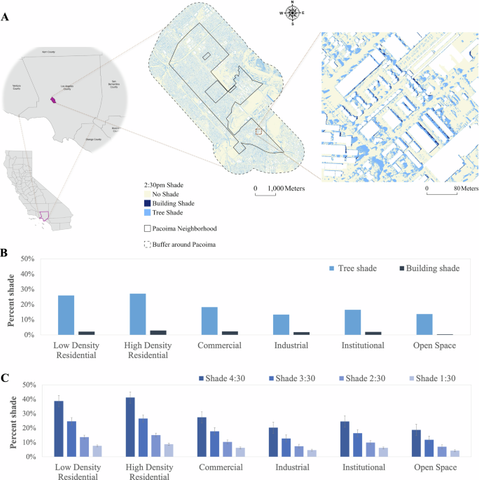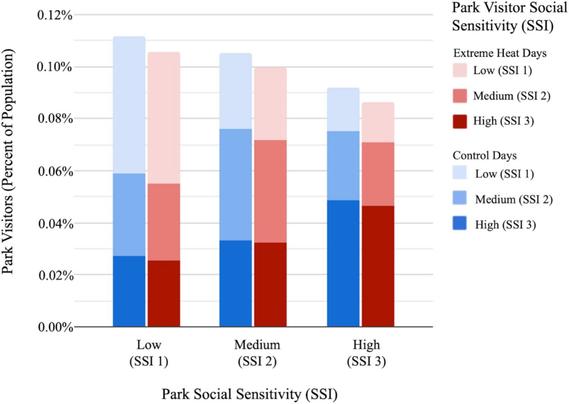Smartphone location data show ...
Smartphone location data show ...
Smartphone locations reveal pa...
Space-time dynamics in hazard ...

Space-time dynamics in hazard exposure analysis: smartphone locations show pedestrian routes are inflexible to extreme heat events - npj Natural Hazards
Vulnerability to environmental hazards is spatially heterogeneous and dynamic. Static measures that are used to determine spatial heterogeneity in vulnerability are unable to capture temporal dynamics. To complement research on vulnerability to extreme heat, we investigated temporal and spatial trends in availability and use of shade by pedestrians during extreme heat events in a vulnerable neighborhood. Shade from trees and buildings calculated from LiDAR were paired with smartphone locations filtered to include outdoor pedestrians on an hourly basis for control and extreme heat days to study behavioral patterns for neighborhood residents, non-residents, and the unhoused population. High-use pedestrian locations showed little difference in activity between control and extreme heat days, especially during weekdays, but with greater variation on weekends. The results indicate inflexibility in space use, even during extreme heat. Outdoor heat mitigation strategies should consider bringing shade to the people in heavily used locations, as pedestrian behavior is inelastic.



